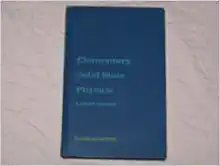Question
Objectives Determine the velocity between two objects after a collision and the momentum of each ball before and after the collision. Collision types and kinetic
Objectives
- Determine the velocity between two objects after a collision and the momentum of each ball before and after the collision.
- Collision types and kinetic energy evaluation.
https://phet.colorado.edu/sims/html/collision-lab/latest/collision-lab_en.html
Theory
Newton's second law is written with the formula Fext = (dP / dt), where Fextis the net external force acting on the system during the collision and (P) is the net momentum of the system.
This momentum is given to an object by its mass (m) multiplied by its velocity (v); P = mv, which is a vector quantity.
If Fext = 0, then (dP / dt) = 0, which means (P) = constant. Therefore, when two objects collide on a horizontal surface devoid of friction, the total force acting on the system during the collision is equal to zero which means that (Pi) = (Pf) where (Pi) is the vector sum of the moment of the two objects by collision and (Pf) is Vector sum of the moment of the two objects after collision.And for the calculation of speed:
m1 v1i + m2 v2i = m1 v1f + m2 v2f
There are two types of collisions:
(1) Elastic Collision: In this collision the total kinetic energy before collision equals the total kinetic energy after collision.
(2) Inelastic Collision: In which there is a loss in kinetic energy so the total kinetic energy before collision does not equals the total kinetic energy after collision.
Procedure:
In this experiment we have two parts related to elastic collision
- part 1: m1=m2
- part 2: m1 m2
Part (1);
a) m1 = m2 = 2kg:
1) Open this link:
https://phet.colorado.edu/sims/html/collision-lab/latest/collision-lab_en.html
2) Select Intro
3) To make the collision elastic drag the slider of Elasticity to the right 100%.
4) Click on more data.
5) To change any value in the table, click on it then type: (See the figure shown above)
6) Choose the following values:
a- m1 = m2 = 2kg
b- Position 1 (-1.00m) and position 2 (0.00m)
c- Velocity of ball 1: make v = vx= 1.00m/s
d- Velocity of ball 2: make v = vx = 0 (Ball 2 is at rest)
7) This collision will take place between the blue ball (m1) and the pink ball (m2) of the equal masses (m1 = m2 = 2kg), with (m2) initially at rest (v2i=0). The blue ball (m1) will collide with (m2) and essentially stops, then (m2) will move in the same direction that (m1) was moving before the collision.
8) Click on Play, then after collision Pause.
9) Record the values of v1f and v2f.
10) Calculate the values of Pi , Pf , Pf/Pi , Ki , Kf and Kf/Ki and record them in table 1. 11) Repeat the experiment for two different values of v1i (3 m/s) and (6.00 m/s) and always keep v2i ZERO.
Step #11, the simulation will not allow you to input an initial velocity of 6.0 m/s. However, you should notice a pattern for the final velocity values from entering the first two values of 1.0 m/s and 3.0 m/s. Use this pattern to determine the final velocity when the inital velocity is 6.0 m/s.
| V1i (m/s) | V2i (m/s) | V1f (m/s) | V2f (m/s) | Pi = m1v1i (kg.m/s) | Pf = m2v2f (kg.m/s) | Pf/Pi | Ki = 0.5m1v1i2 (J) | Kf = 0.5m2v2f2 (J) | Kf/Ki |
1.00 | 0 | ||||||||
3.00 | 0 | ||||||||
6.00 | 0 |
Do they all have the same Pf / Pi? explain.
..................................................................................................
Do they all have the same Kf / Ki? explain.
...................................................................................................
Part (2): Elastic Collision
b) m1 m2:
1)Use the same link:
https://phet.colorado.edu/sims/html/collision-lab/latest/collision-lab_en.html
2) KEEP: Elasticity 100% by dragging the blue triangle () to the right
3) Select: m1 = 4kg and m2 = 3kg,For Part #2, Step #3, the simulation will not allow you to input a mass greater than 3.0 kg. Please use m1 = 3 kg and m2 = 2 kg instead.
4) Position 1 (-1.00m) and position 2 (0.00m)
5) Select: v1i=1.00m/s and v2i=0.5m/s
6) Click on Play, then after collision Pause.
7) Record the values of v1f and v2f. 8) Calculate the values of Pi , Pf , Pf/Pi , Ki , Kf and Kf/Ki and record them into tables 2 & 3
Table 2
| V1i (m/s) | V2i (m/s) | V1f (m/s) | V2f (m/s) | Pi = m1v1i + m2v2i (kg.m/s) | Pf = m1v1f + m2v2f (kg.m/s) | Pf/Pi |
1.00 | 0.50 | |||||
1.50 | 0.75 | |||||
2.00 | 1.00 | |||||
2.50 | 1.25 |
Table 3
| V1i (m/s) | V2i (m/s) | V1f (m/s) | V2f (m/s) | Ki = (0.5m1v1i2) + (0.5m2v2i2)
(J) | Kf = (0.5m1v1f2) + (0.5m2v2f2) (J) | Kf/Ki |
1.00 | 0.50 | |||||
1.50 | 0.75 | |||||
2.00 | 1.00 | |||||
2.50 | 1.25 |
Do they all have the same Pf / Pi? explain.
..................................................................................................
Do they all have the same Kf / Ki? explain.
................................................................................................
Questions:
- What is the difference between elastic and inelastic collision?
................................................................................................................................................................................................................................................................................................
- Show the difference when you are the mass of the two balls (m1=m2) and (m1 m2).
................................................................................................................................................
................................................................................................................................................
- What does the quantity (Kf - Ki) represent.
.............................................................................................................................................................................................................................................................................................................
Conclusion: ......................................................................................................................................................................................................................................................................................................................................................................................................
Step by Step Solution
There are 3 Steps involved in it
Step: 1

Get Instant Access to Expert-Tailored Solutions
See step-by-step solutions with expert insights and AI powered tools for academic success
Step: 2

Step: 3

Ace Your Homework with AI
Get the answers you need in no time with our AI-driven, step-by-step assistance
Get Started


